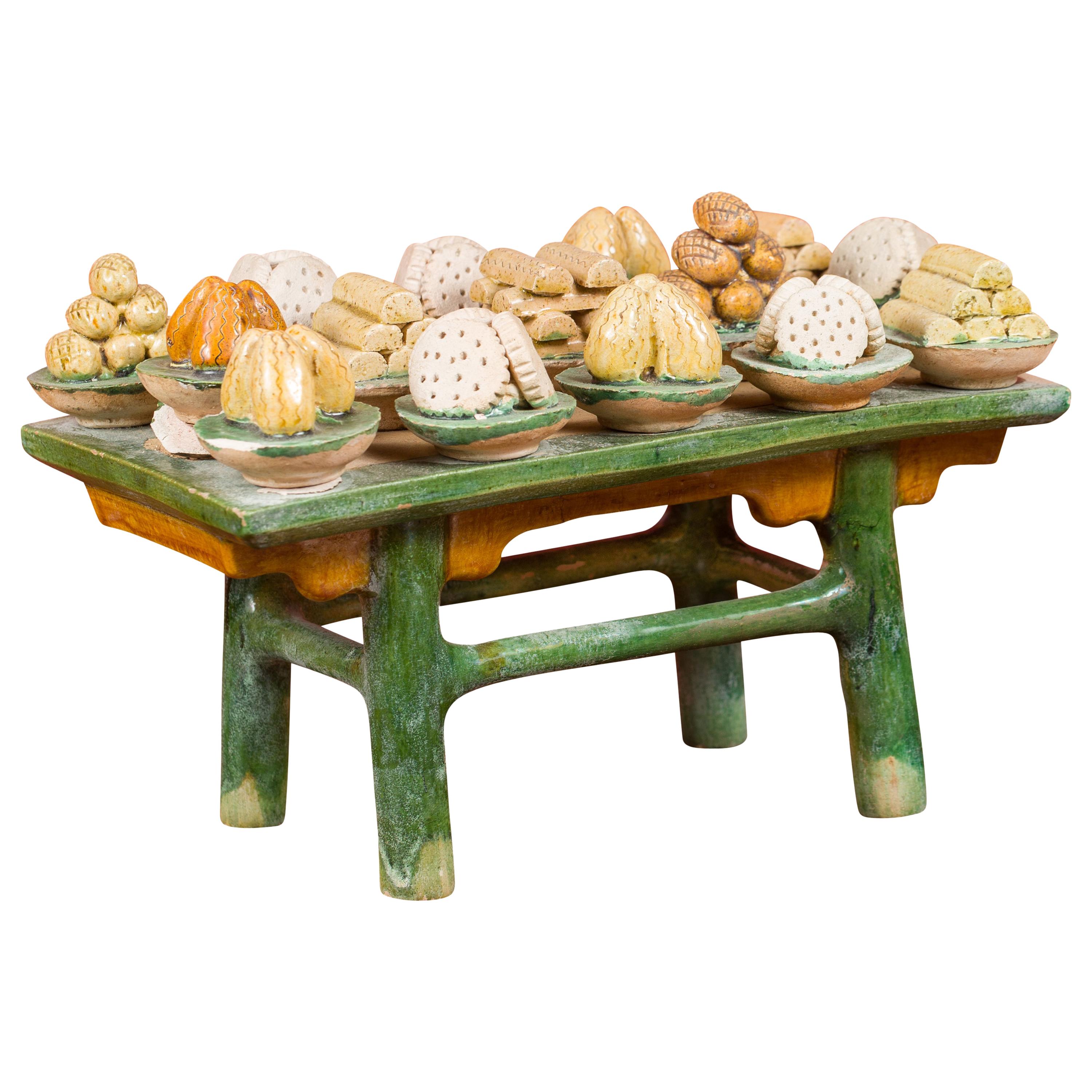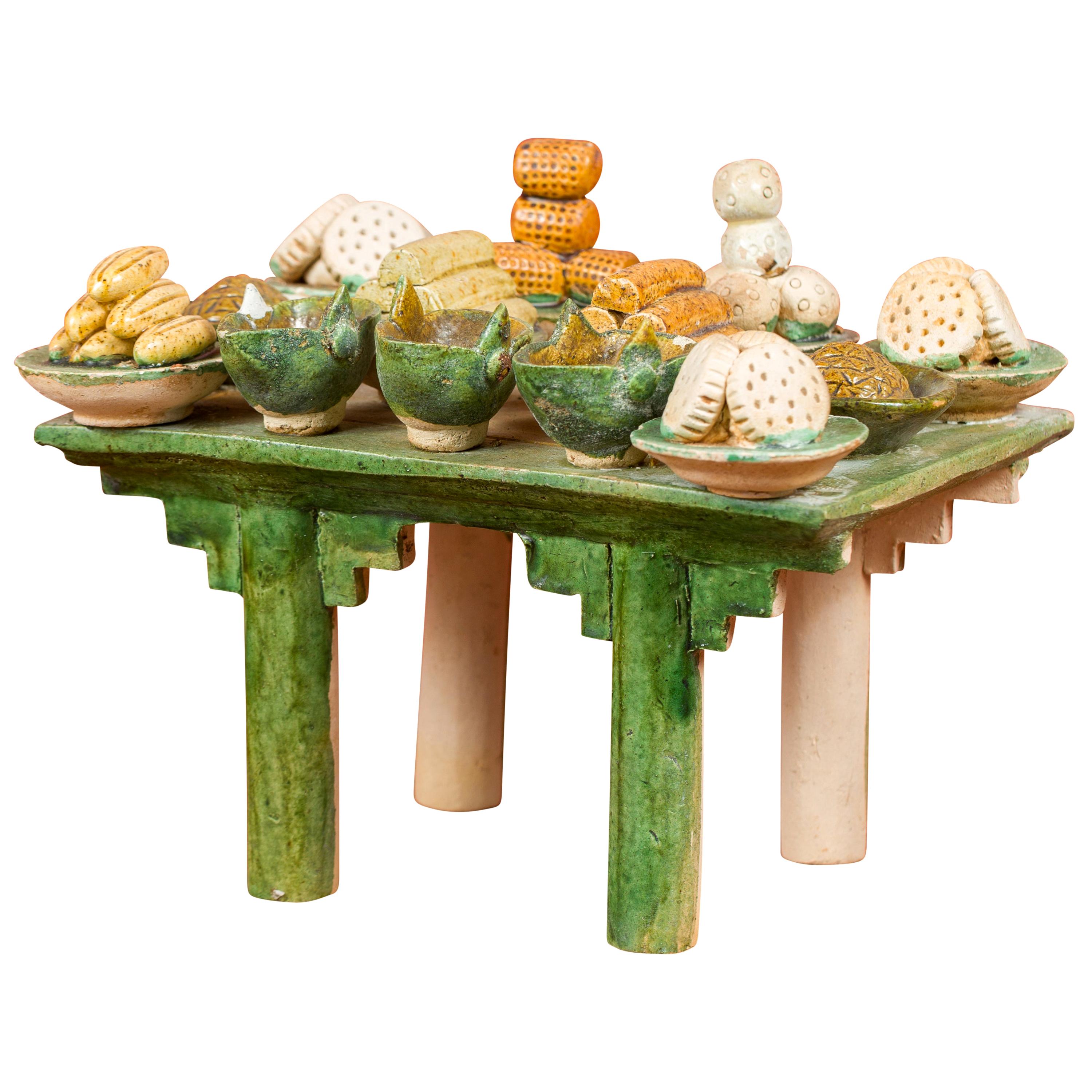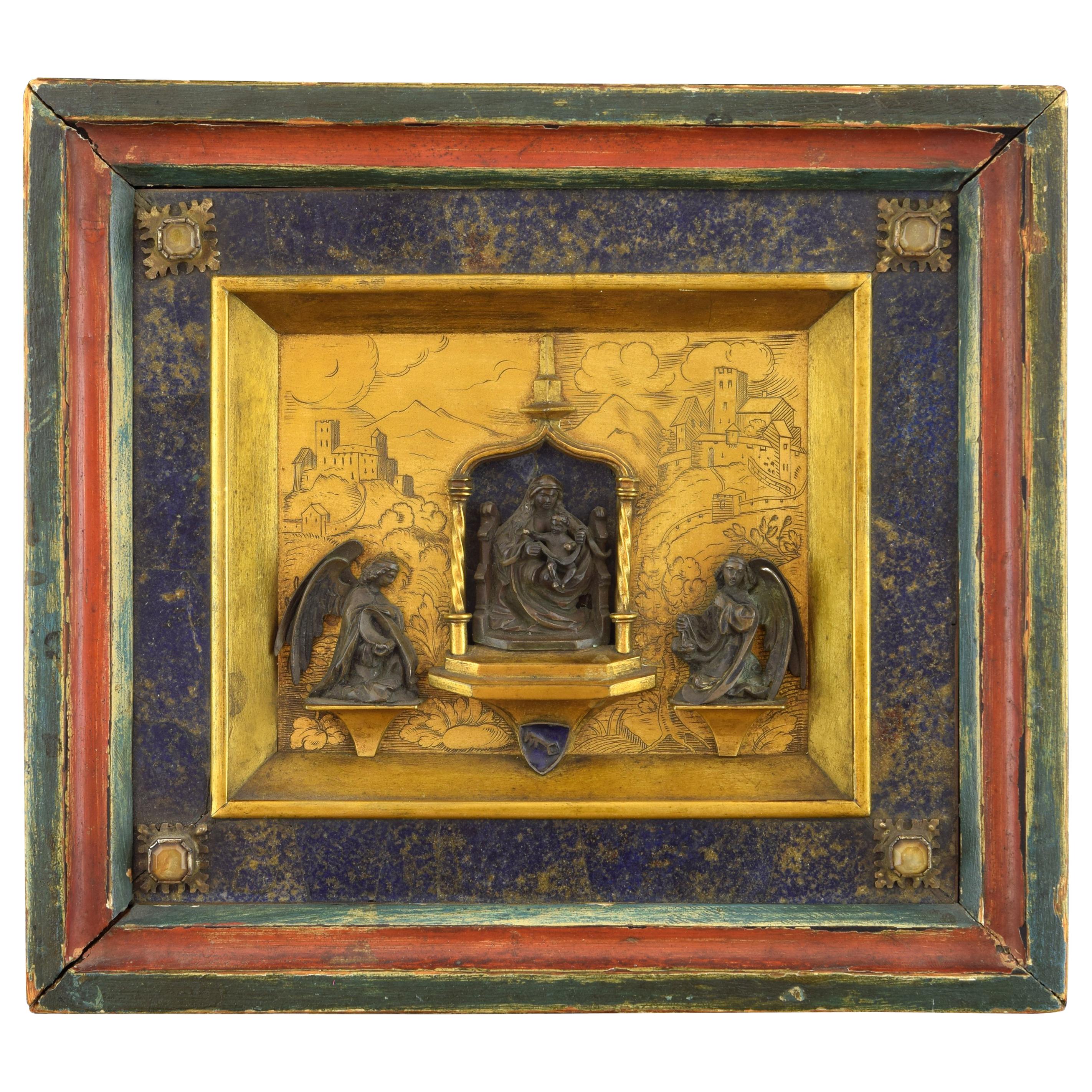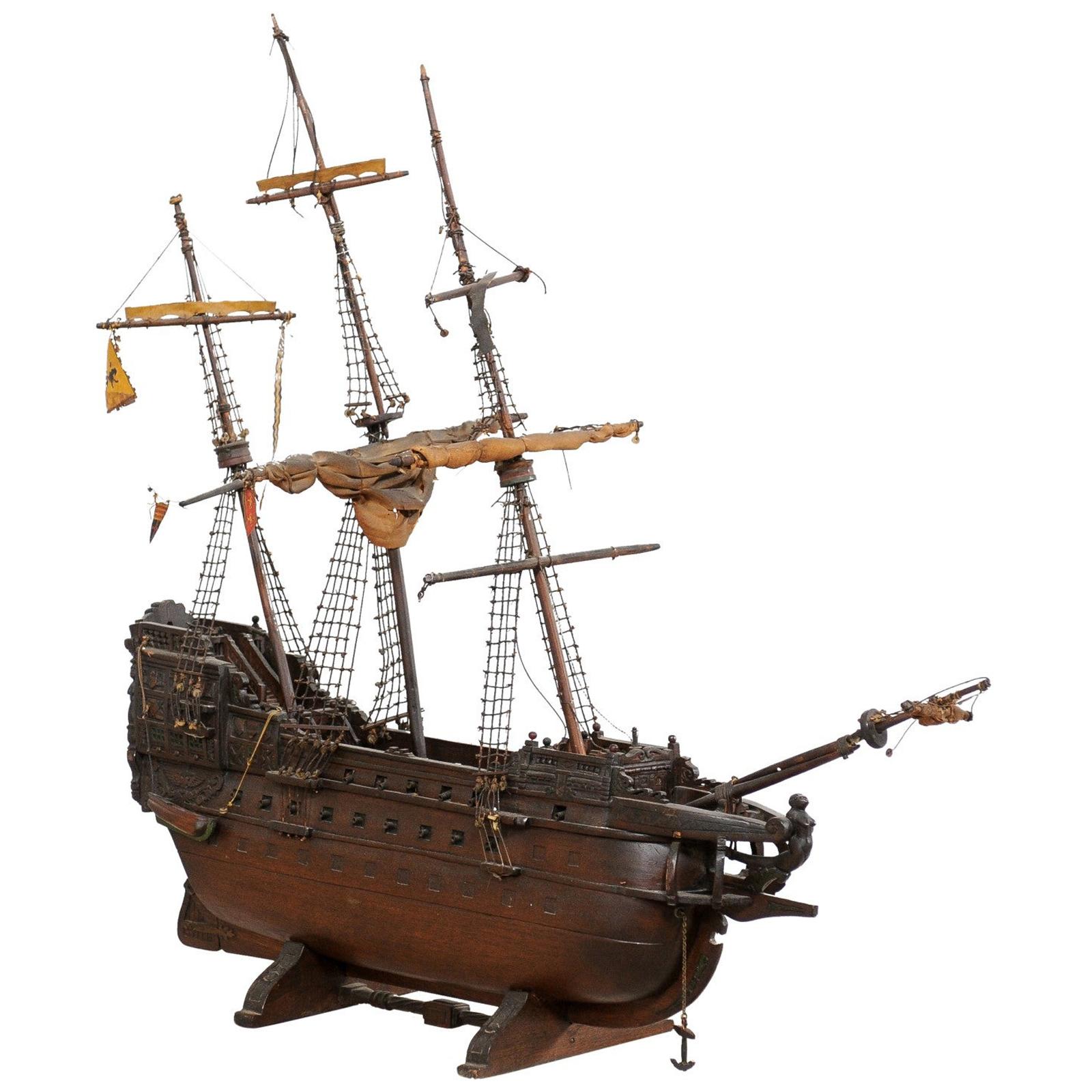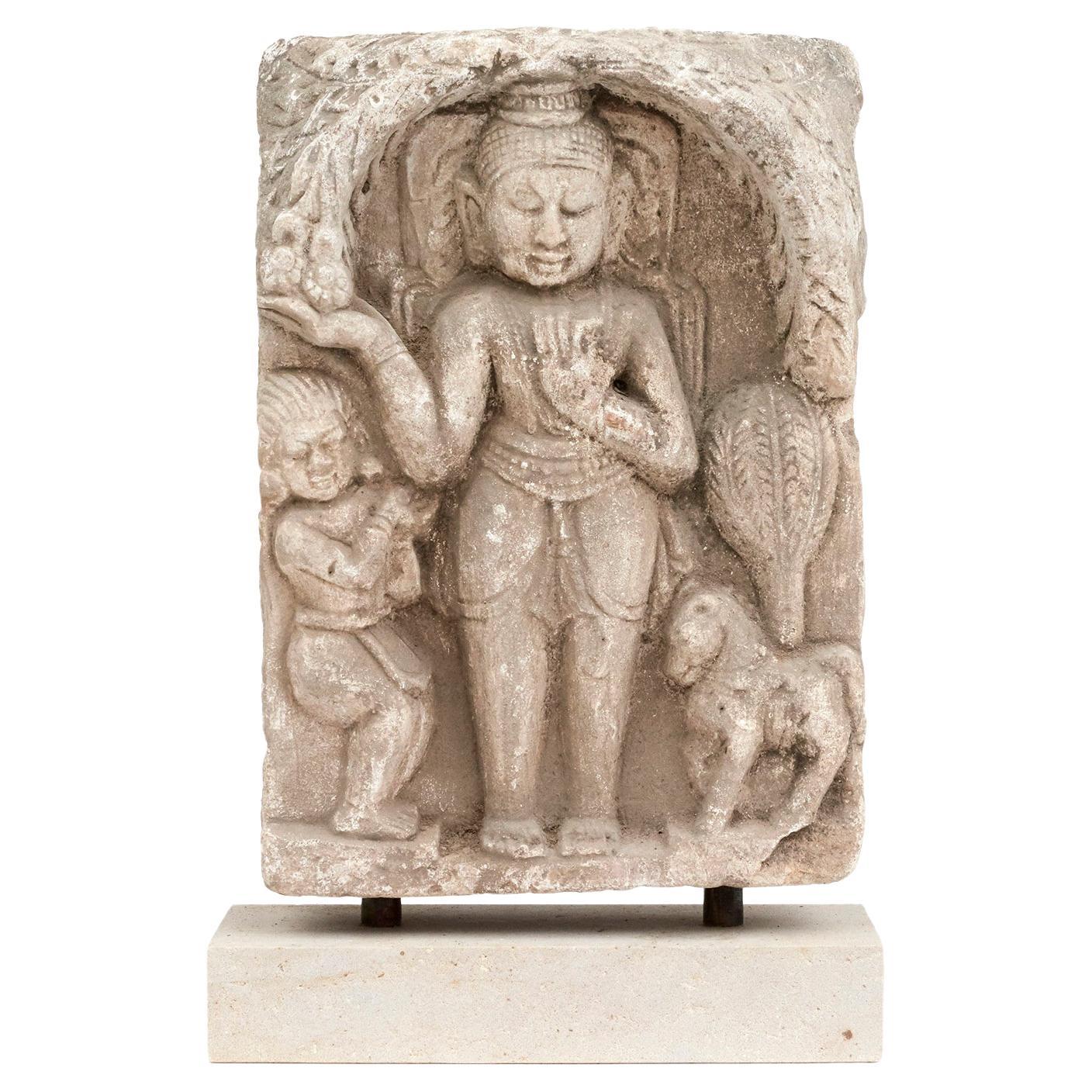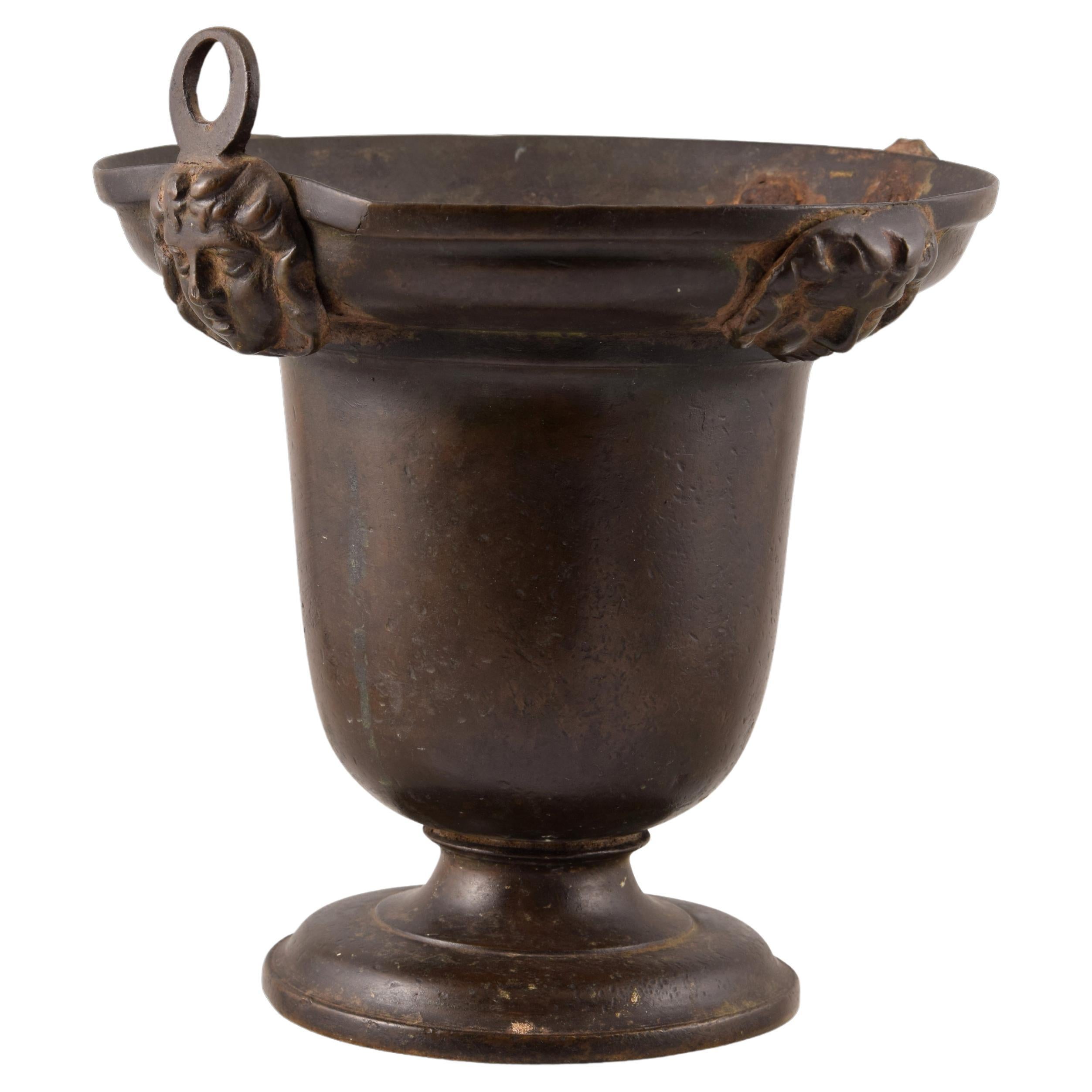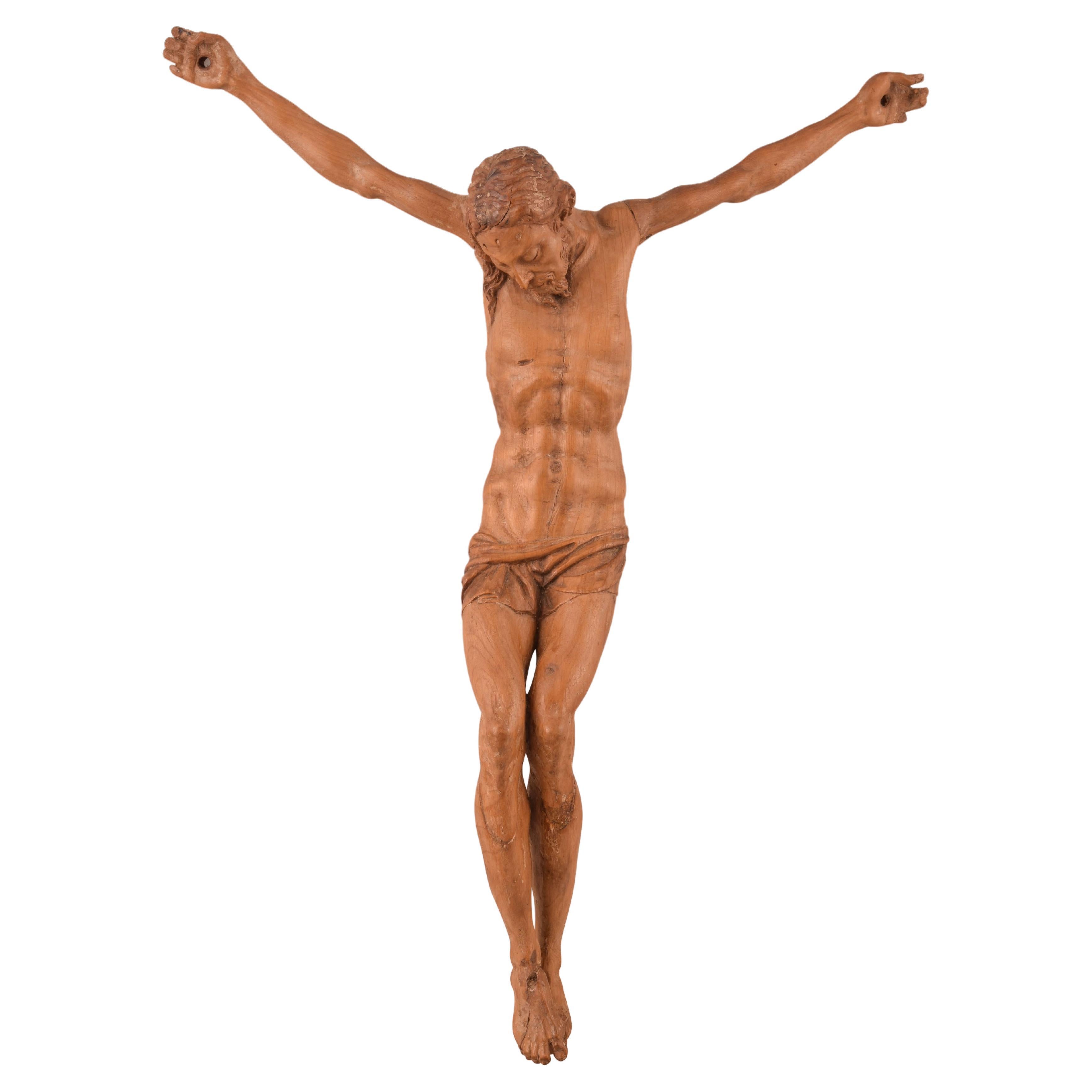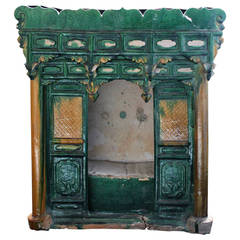
Large Ming Pottery Shrine Model, 15th-16th Century
View Similar Items
1 of 6
Large Ming Pottery Shrine Model, 15th-16th Century
About the Item
- Dimensions:Height: 19.69 in (50 cm)Width: 15.75 in (40 cm)Depth: 7.88 in (20 cm)
- Style:Chinese Export (Of the Period)
- Materials and Techniques:Pottery
- Place of Origin:
- Period:16th Century
- Date of Manufacture:15th Century-16th Century
- Condition:Wear consistent with age and use. Some sections with cracking, small area restuck, no restoration, signs of being buried. Overall very sound, excellent glaze with slight iridescence.
- Seller Location:Geelong, AU
- Reference Number:Seller: 10153041stDibs: LU125022397442
You May Also Like
- Chinese Ming Dynasty Sancai Glazed Pottery Architectural Model, 16th CenturyLocated in Austin, TXAn unusually large Chinese Ming Dynasty glazed pottery architectural model of a shrine or cabinet, Ming Dynasty (1368 - 1644), circa 16th century, China. The shrine model crafted o...Category
Antique 16th Century Chinese Ming Sculptures
MaterialsPottery
- Ming Dynasty 15th or 16th Century Chinese Glazed Terracotta Funeral Table MingqiLocated in Yonkers, NYA Chinese Ming dynasty period glazed terracotta funeral table mingqi from 15th-16th century with food in dishes. Created in China during the Ming Dynasty, this terracotta funeral table showcases a typical Chinese altar, painted in green with tempera and adorned with a lovely variety of modeled and painted miniature foods such as cakes and breads. Called Mingqi, these kinds of terracotta models were traditionally placed in Chinese burials...Category
Antique 16th Century Chinese Ming Antiquities
MaterialsTerracotta
- Chinese Ming Dynasty 15th or 16th Century Glazed Terracotta Funeral Table MingqiLocated in Yonkers, NYA Chinese Ming dynasty period glazed terracotta funeral table mingqi from 15th-16th century with food and drinks. Created in China during the Ming Dynasty, this terracotta funeral table showcases a typical Chinese altar, painted in green with tempera and adorned with a lovely variety of modeled and painted miniature food and drinks such as cakes. Called Mingqi, these kinds of terracotta models were traditionally placed in Chinese burials...Category
Antique 16th Century Chinese Ming Antiquities
MaterialsTerracotta
- "Madonna with Child and Angels". Italy, 15th-16th CenturiesLocated in Madrid, ESBronze in its color and gold, lapis lazuli, rock crystal, enamel. In the centre of the work is presented, enthroned, the figure of Mary, with a mantel (fireplace) on her shoulders and hair and holding on her knees the child, who appears addressing one of the angels. The virgin is also sheltered by an ogee arch supported on turned columns, and raised visually by steps. This composition achieves a very striking contrast: the dark bronze figure, in contrast to the lapis lazuli background and the part of the arch and the outside of it, in gilded bronze. Under the steps there is a heraldic enamel shield with a key on an azure background. The angels, kneeling, are flanking this figure, and, appearing in dark bronze, visually share the "category" of religious figures with Mary, while their (lower) position gives more status to both the Mother and Jesus. The rest of the composition is completed with a delicate landscape: constructions and walls on mountains, clouds in the sky, plants, stones, etc. To the outside, another lapis lazuli frame is placed decorated in the corners with appliques, giving way to carved and polychrome wood. The lapis lazuli is a semiprecious stone already known in the seventh millennium BC., found in deposits from the Caucasus to Mauritania. From the end of the middle ages, it increased its export to Europe, its use being more frequent since then both to use it as a pigment in paintings after grinding it (giving rise to the finest and most expensive of the blues, and of the colors in many occasions), as for backgrounds of paintings, incrustations in works of art, jewelry and, a little later, in the well-known "hard stone works". The figure of Mary still shows an influence of Gothic models, although more European than Italian, along with elements that could already show a closeness to the Renaissance: although the nakedness of Jesus is already shown in Gothic works (Madonna with Angels by Fra Angelico ), the creation of space by playing with the cloth in front of Christ can be appreciated in more advanced paintings (Virgin with Child by Domenico Ghirlandaio, National Gallery of London); the presence of a powerful throne can be seen frequently in Italian Madonnas of the Quattrocento (and before), but not quite as presented here. As for the landscape, it is necessary to compare it, for example, with that of the fresco of the Condotiero Guidoriccio de Fogliano (Simone Martini, finished in 1328). This is a work of great technical and aesthetic quality, not to mention the materials chosen for its creation, comparable only to outstanding examples from around the world, such as those preserved in the Palazzo Madama in Torino (Italy), where the coral It also has an important role. It is essential to mention, also, works such as the plate of hard stones (lapis lazuli between them) with a relief of Mary with the Child in...Category
Antique 16th Century Italian Renaissance Religious Items
MaterialsLapis Lazuli, Bronze, Enamel, Other
- Large Himalayan Inlaid Bronze Vajra with Wrathful Faces, 15th-16th CenturyLocated in Austin, TXA large and unusual Himalayan bronze and mixed metal nine prong vajra featuring wrathful faces. In the style of the Tangut (Western Xia) Kingdom (1038 to 1227), but probably later, most likely 15th-16th century. The body of the vajra crafted from a copper alloy, with five wrathful faces on either side and gold and silver inlays to the center. The prongs crafted of iron, with each side having eight prongs arcing outwards around a central prong before coming back to a copper alloy point. The vajra is meditational tool...Category
Antique 16th Century Mongolian Metalwork
MaterialsGold, Silver, Bronze, Iron
- Italian Wooden Ship Model of a 15th/16th C. Galleon, Tall Ship, 3-Masat SchoonerLocated in Atlanta, GAAn Italian wooden ship model of a 15th/16th century galleon, from the early to mid 20th century. This three-mast schooner model, when given a closer look, reveals the minutia in the details, from the beautifully carved stern and rudder, mermaid figurehead, cannon/gun-ports, the bow sprit, masts, flags, and dangling anchor. This tall ship model...Category
Mid-20th Century Italian Architectural Models
MaterialsWood
Recently Viewed
View AllMore Ways To Browse
Green Ming Pottery
Antique Furniture Melbourne Australia
Chinese Antique Australia
Antique China Australia
Antique Ceramics Australia
Ming Dynasty Pottery Model
Antique Australian Pottery
Bat Chinese
Japanese Antique Board
Vintage Japanese Wooden Furniture
Chinese Jade Flower
Chinese Hand Fan
Antique Wooden Containers
Asian Snuff Bottles
Japanese Antique Figurines
Japanese Figurines Antique
Antique Japanese Figurine
Antique Japanese Figurines

